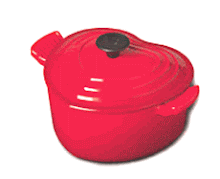Right, seeing as I am supposedly learning Chinese, some of the more 'educational' phrases I've come across - the first three are all from my textbooks:
- 如果畫家是個男的,老漢一定會把畫家請到家裡,喝上兩杯。畫家是女的,老漢只能用毛巾包上幾個新雞蛋,給女畫家送去。(this comes from a story, from a contemporary Chinese story book no less, about an artist who comes to a little village and changes the perspective of all its inhabitants, the phrase talks about how one of the old villagers plans to invite the artist round for a few drinks if he's a bloke, but will give the artist a few eggs if she's a woman. It's not so much the sexism, but why eggs?!)
- 元元在幼兒園上著美術班和體操班,星期六在外面學電子琴,星期天學書法,所以一到周末比平時還忙。吃過苦的人才知道什麽是甜呢。(an illustration of how competitive Chinese childhoods are nowadays - this describes how a kindergarten kid already goes to art class, fitness class, piano class, and calligraphy class. Apparently kindergarten kids needs to learn what is the bitterness of life before they can learn what is sweet (!) I feel for both the parents and the kids)
- 咱們一起去 OK 一下兒怎麼樣?(literal translation - let's go 'OK' for a little while, i.e. go sing some karaoke - I just love the phrasing!)
- 輕輕一按就 OK! (more gratitious use of the word OK)
And there were just some moments where (as Yinne has pointed out to me before), you just think 'only in China':
- Man riding his motorbike wearing slippers (the pink fluffy kind)
- Woman riding her motorbike with a bowl of noodles between her legs (soup noodles at that!)
- Man carrying a big box of fireworks with a fag daggling from his mouth
- Child pooing on the side of the pavement (mum had kindly laid out a crisp packet for him to poo on)
- A pirate DVD shop located right next door to the police station
- Staff at the local restaurant doing their exercises en masse right at the beginning of their shift

- Man wearing Hello Kitty apron - I just love the fact that men are masculine enough here to unashamedly declare their love for the kitty
- Me getting very excited upon finding another sit-down loo in Kunming - in my 2 months here, I have found a total of 2!













































